Seeing a rooftop tent on your car for the first time is a bit like walking into an open inspection for your dream home — you can instantly picture the lifestyle. Once that seed is planted, resistance is very nearly futile. Post-installation of a James Baroud Evasion Evolution courtesy of James Baroud Australia and their Adelaide dealer SA Rooftop Tents, I considered crossing the border to Western Australia and hiding away indefinitely on a secluded beach, my phone blissfully on aeroplane mode.
Instead, I headed down to the Yorke Peninsula for a weekend away. With unseasonably beautiful weather punctuating a dismal spell of rain, I blessed my run of luck as I whizzed around the peninsula covering many of my favourite spots — and a few new ones. Here’s what I found out about the James Baroud Evasion Evolution during my time away.
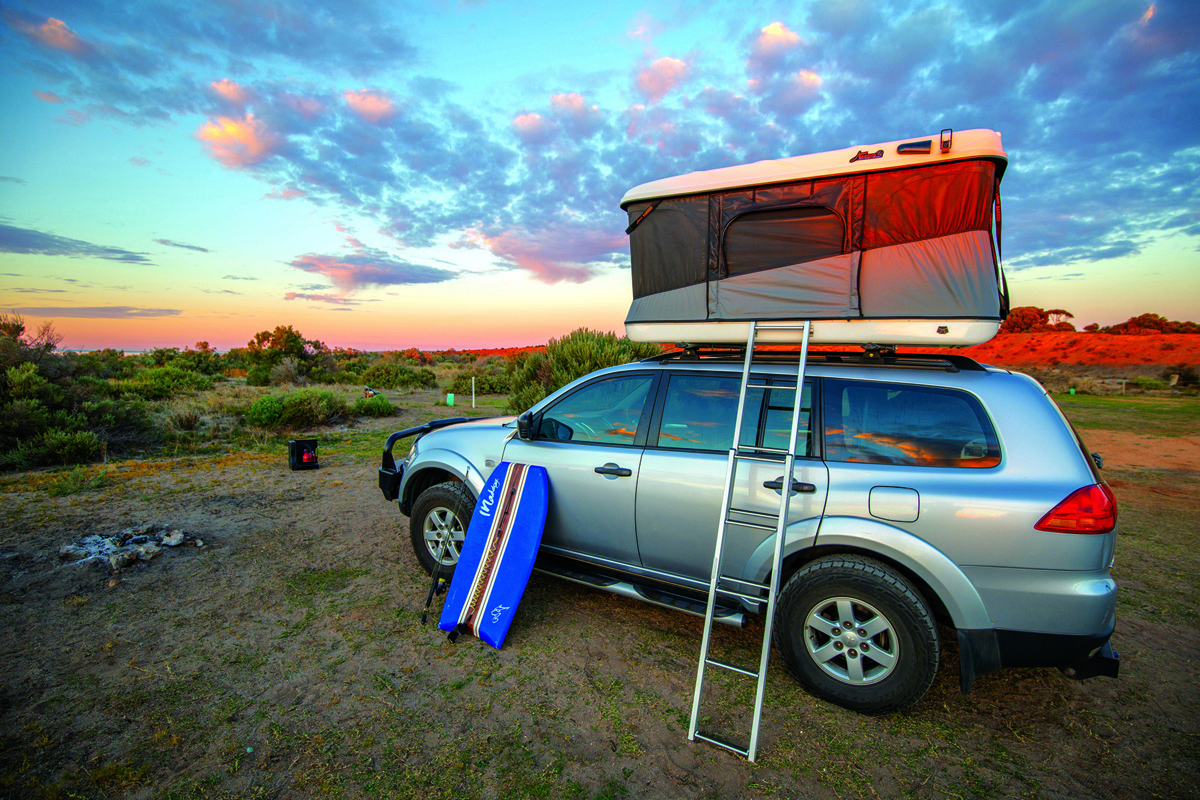


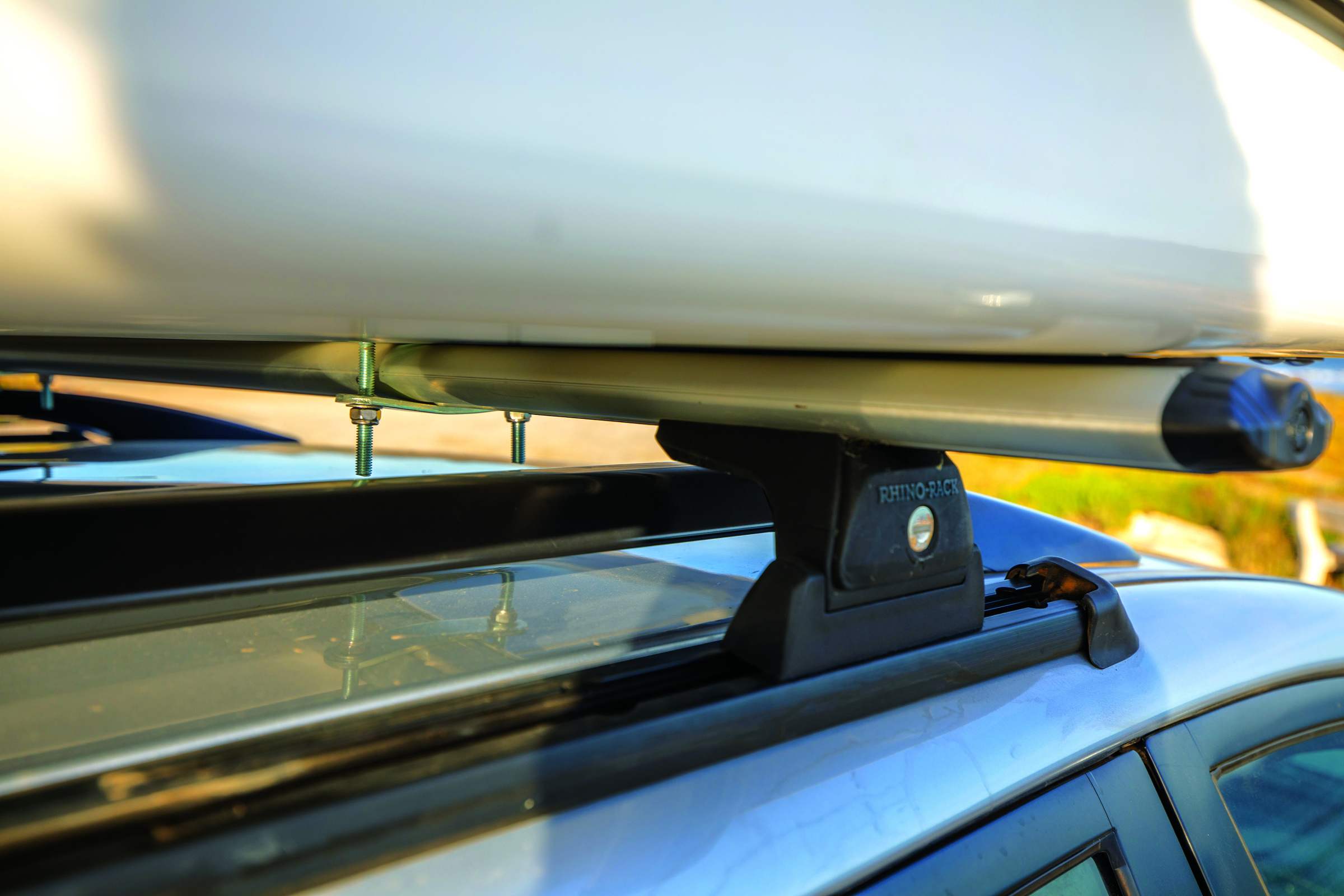
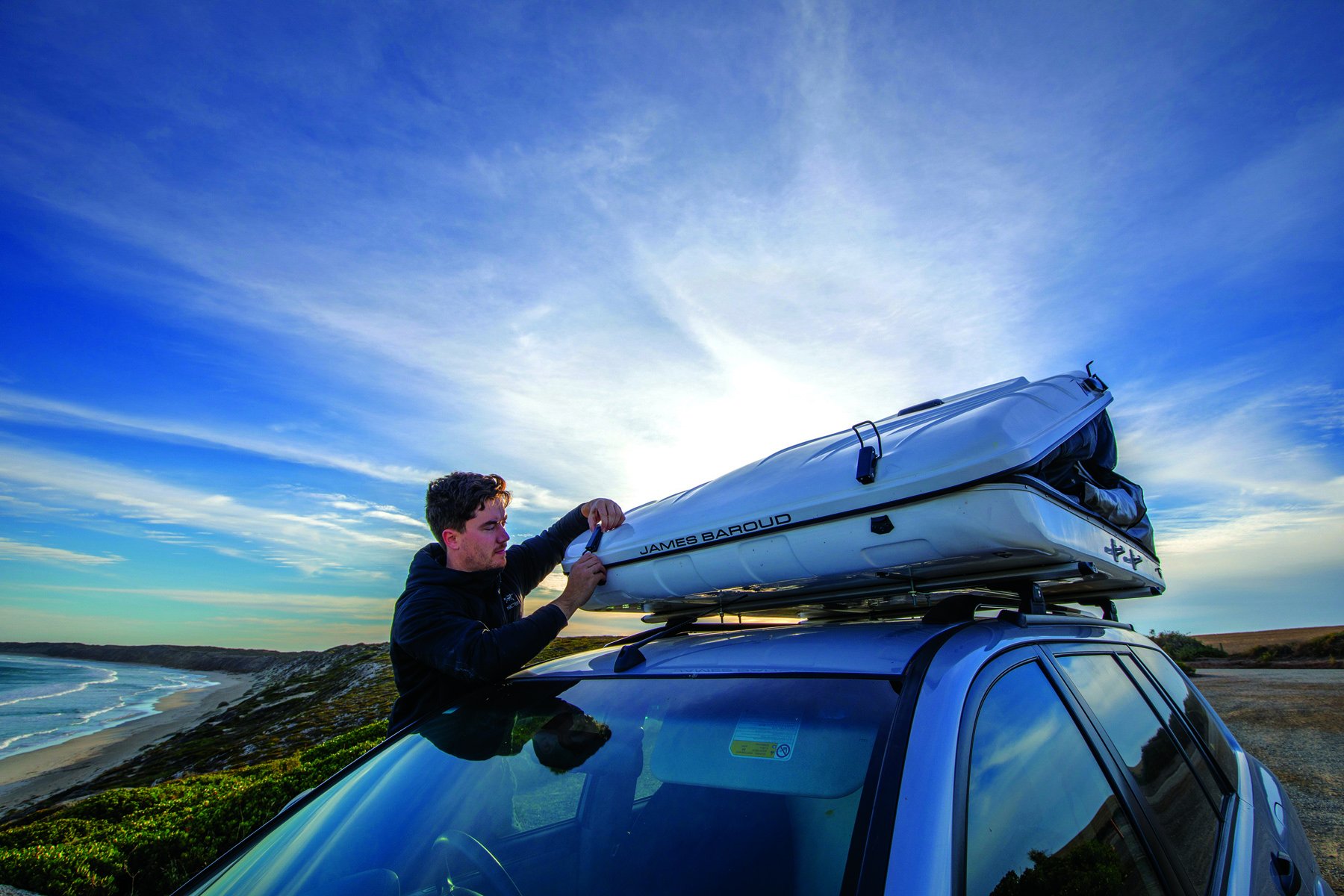
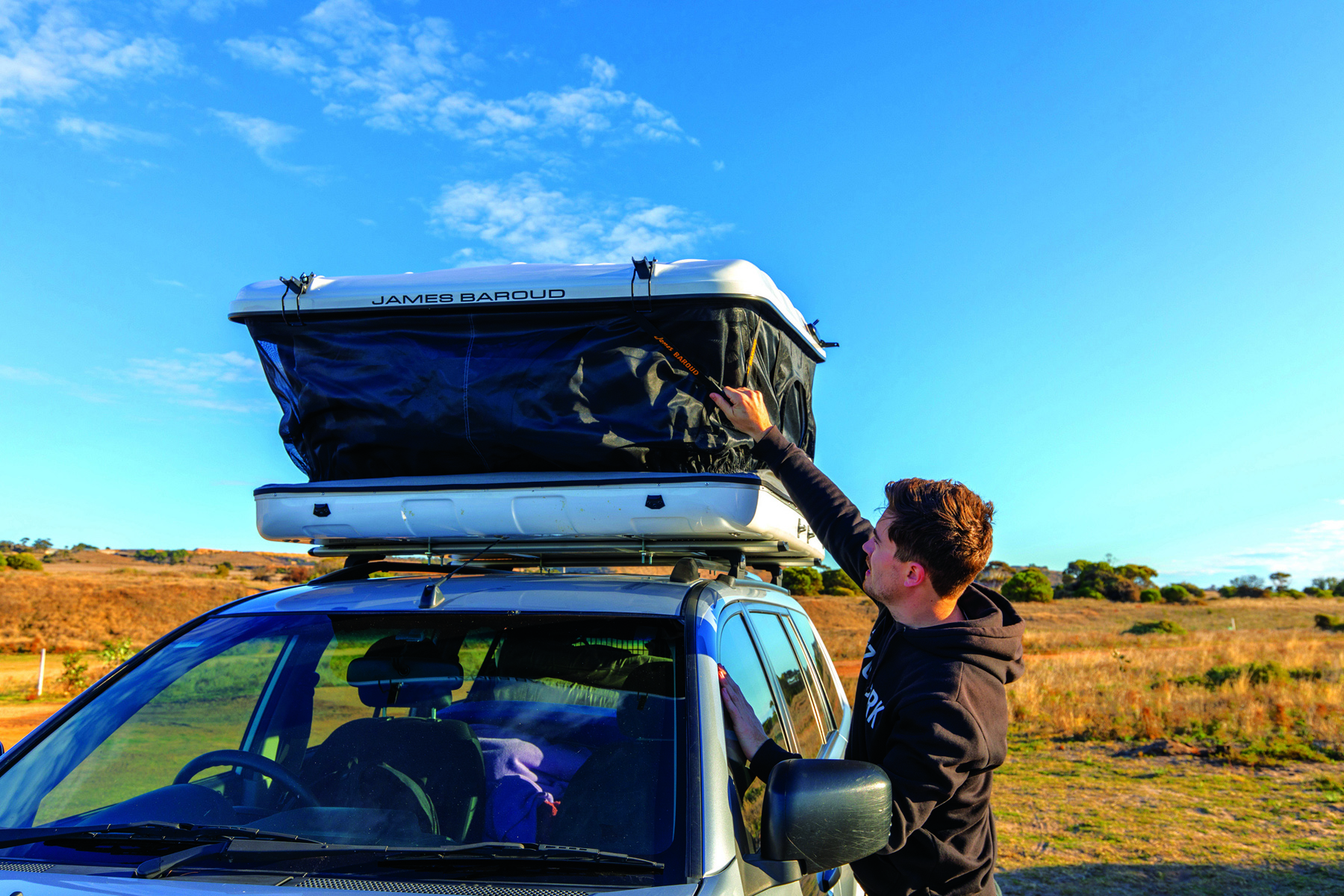
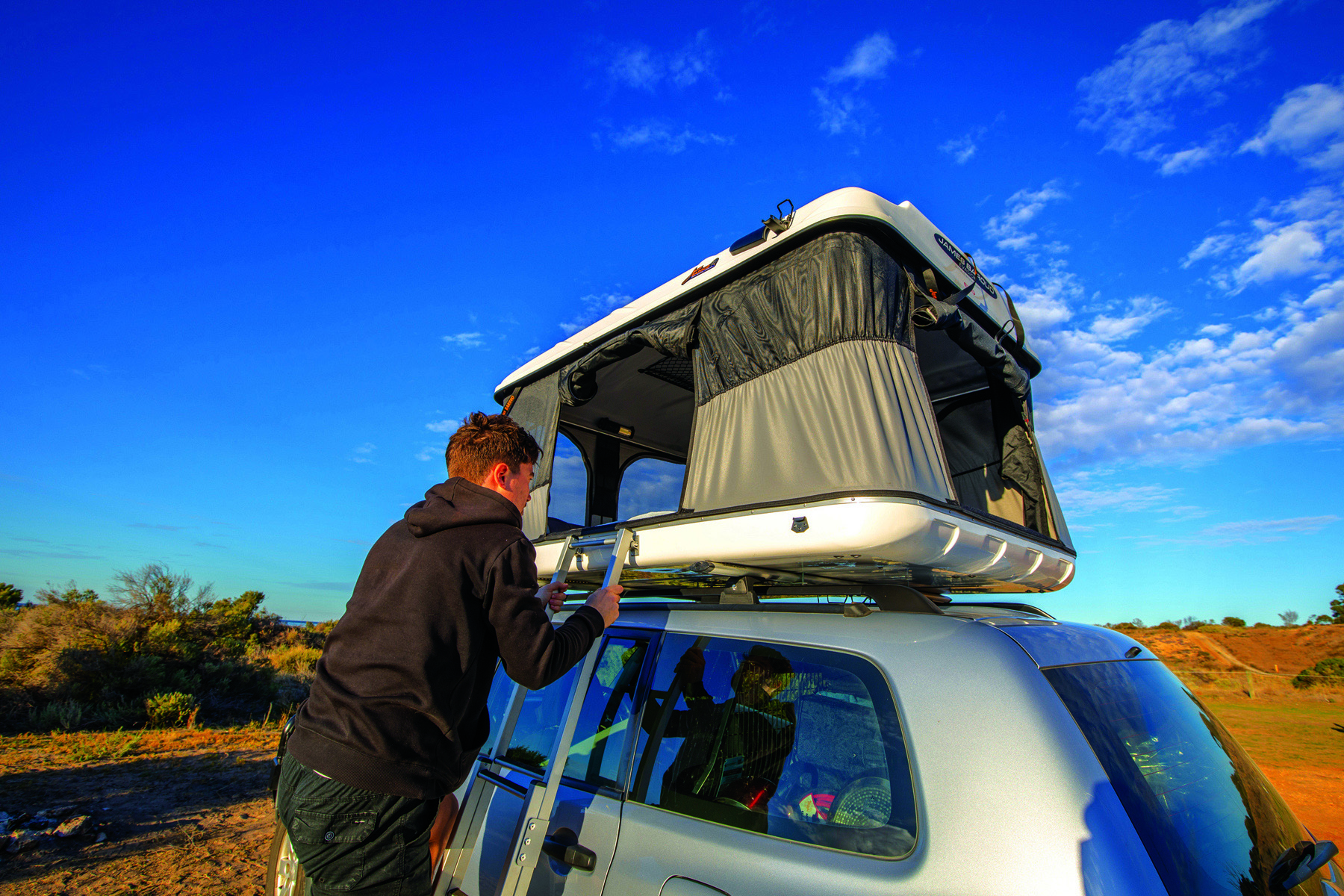
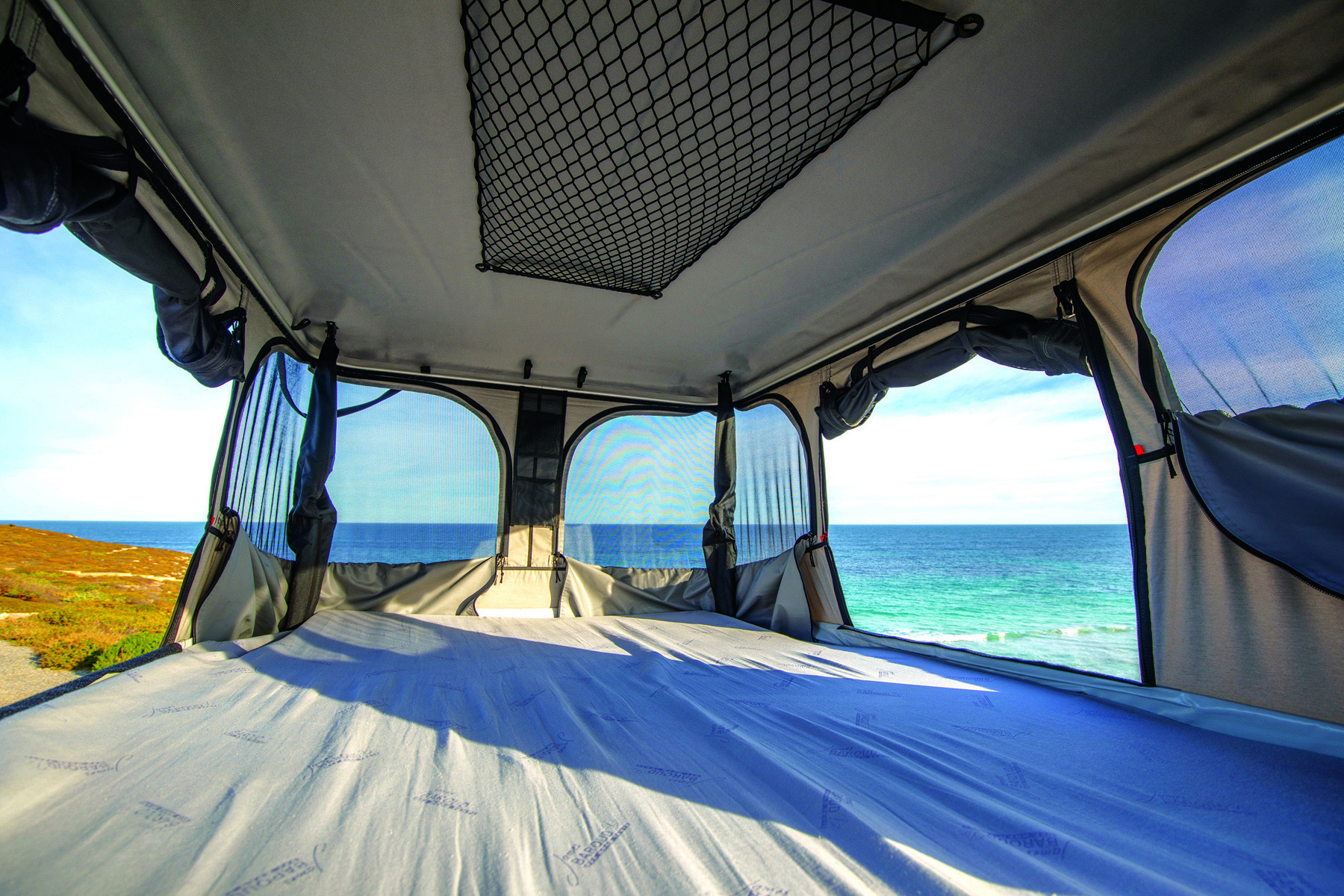
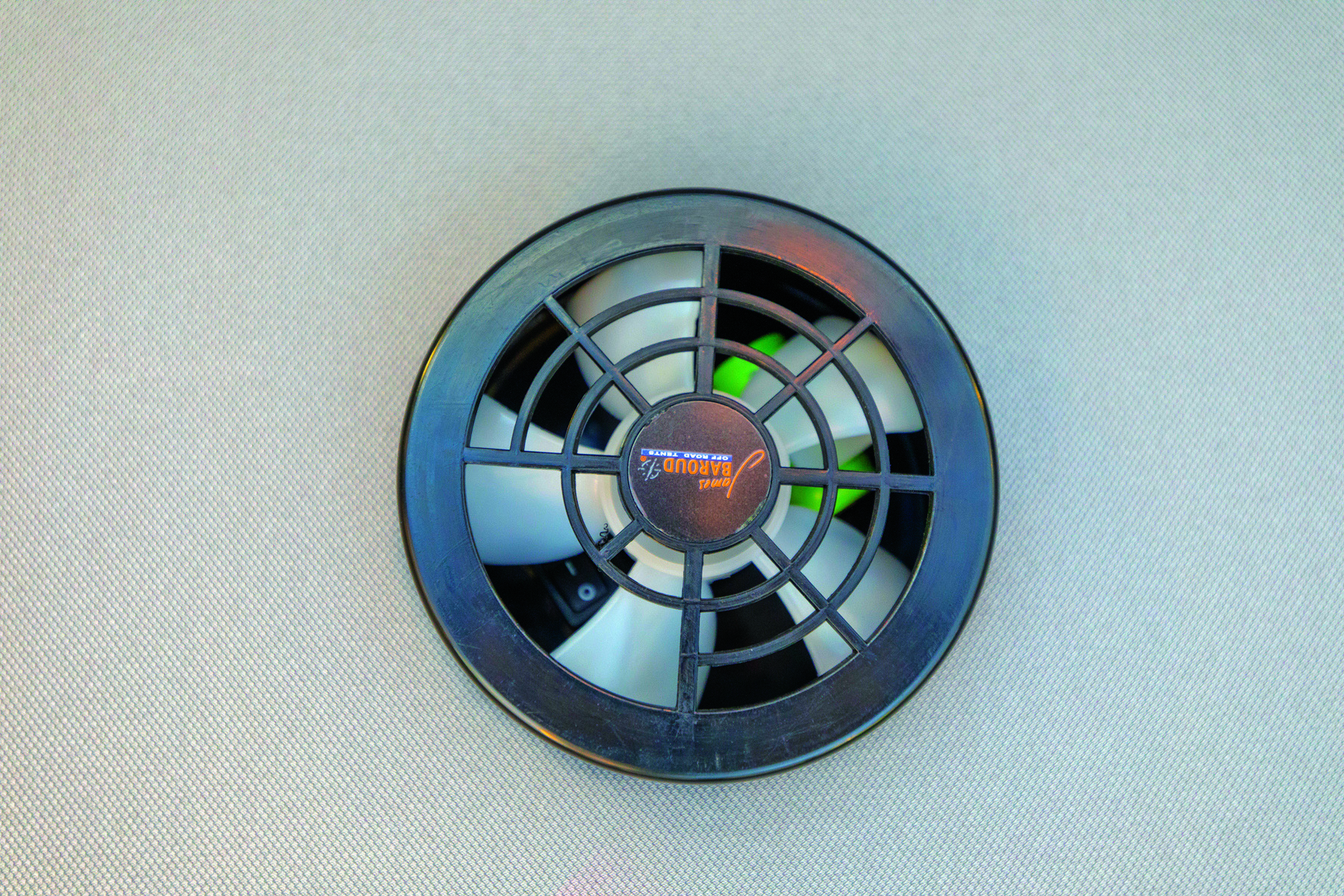
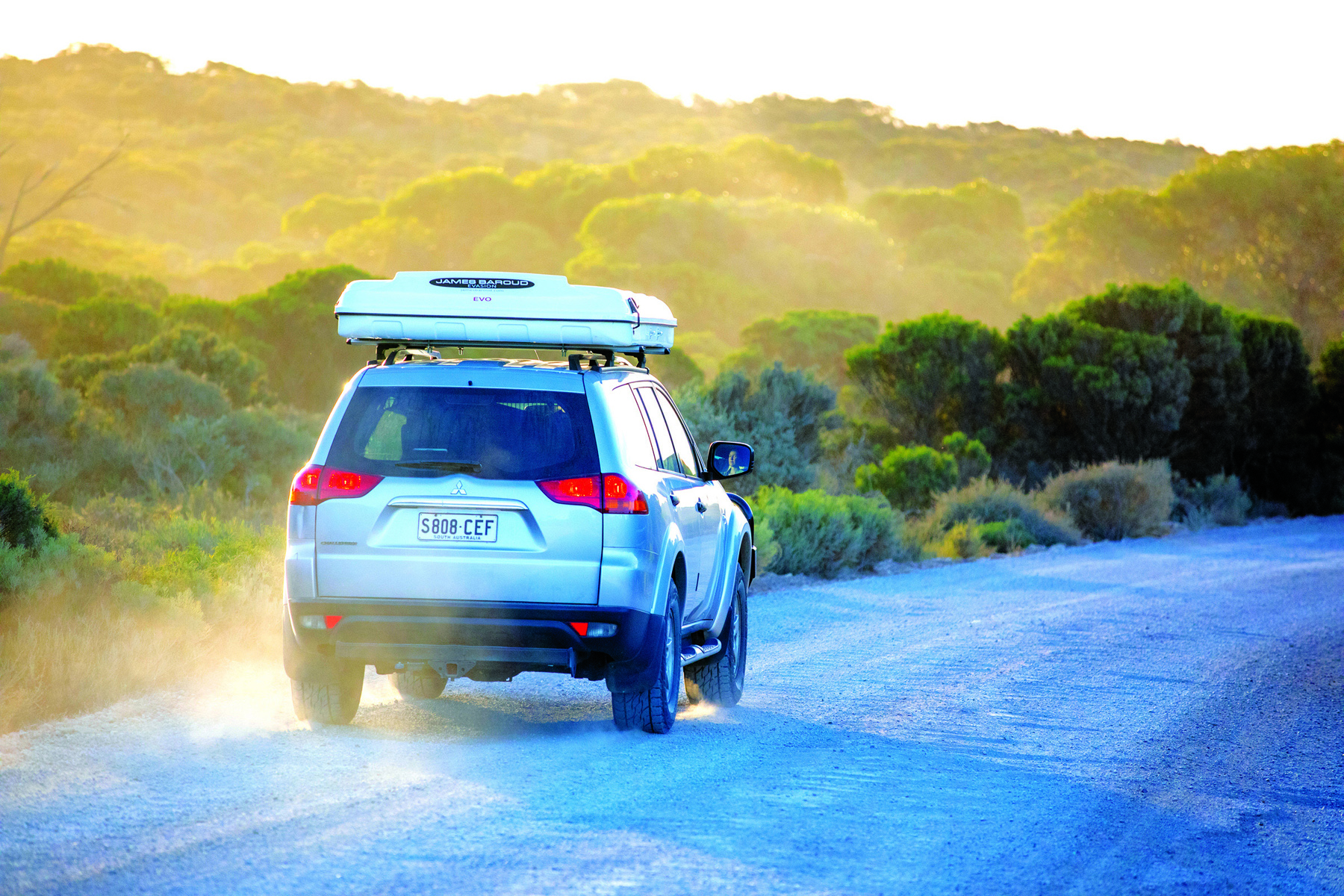
INSTALL AND DRIVING
Some dealers have strong relationships with roof rack outlets, as Tony from SA Rooftop Tents does with Roof Rack City. Ask your dealer if they can help with install, to spare yourself the work!
Lifting a side-folding tent or a heavier metal tent onto the roof rack can be a nightmare. With the fibreglass, pop-up James Baroud, everything is easier. If you do install it with just yourself and a mate, you can put some blankets over the crossbars and over the back of your car, and almost slide the tent on or off. This way the tent is always supported, meaning you bear less weight. I’d only really consider doing this with a James Baroud, due to the fibreglass underside, lack of sharp edges and length (which makes it possible).
Once it’s up, the Evasion has a pleasantly transparent and straightforward installation process. Two gutter-mounted crossbars are enough, though a platform can be made to work.
Two metal rails are recessed within long hollows in the tent’s fibreglass underside where you insert four plates holding two hanging bolts into. The bolts stick out the bottom and you position them either side of the crossbars by lifting one end of the tent at a time. A metal plate with two hole fits it onto the bolts, before two 13mm corrugation-smart nyloc nuts are used to secure the plate against the crossbar’s underside, thereby securing the tent to the car. As with any RTT install, set-up may be better if you have a ratchet and socket (removing and reapplying a spanner is time-consuming).
On the road, the tent makes minimal wind noise due to its smooth, rounded fibreglass structure. Impact on fuel consumption is negligible, perhaps an extra litre per 100km. At 60kg, this tent is eligible for smaller cars (though it’s a little wide at 143cm, which limits this). It’s also a good 30 to 40kg lighter than some popular metal tents.

UP IT GOES
Firstly, setting up the Evasion doesn’t increase your camp footprint, so you know that if your car fits into a site, the tent is sure to fit in too. The lid is held down by four flip-over latches, one to each corner. To set up the tent, you first release the back latches and give the lid a gentle nudge. Then you head to the front, release the latches there and push up.
Each latch has a U-shaped spring-loaded fitting that must be pushed in to release the latch, adding safety while you’re driving. The latches can be flipped back and secured using these fittings, even when the lid is up, to stop them clattering around in the wind or as you rock the tent.
Once you’ve released all latches (always in a back first, front second order on the way up) you fetch the ladder. During our trip, we stored it in the car, which for us in the Challenger meant storing it on an angle that used more space than necessary. This was okay for a short trip with limited gear. The non-locking telescopic ladder slots onto two anchor points and once it has been placed out at the preferred angle, the wrap-around catches are such that the ladder cannot lift off. The anchor points can be put below all three doors, adding versatility. For example, you can shift the ladder to the side away from neighbours for increased privacy.
The tent’s lid is supported on four folding gas rams, fixed to the floor and ceiling, with a flexing elbow joint in-between. When closing, the ram’s upper and lower halves fold towards the tent’s centre, parallel to the tent’s side edges. Once you have unzipped the ladder door fully and climbed up, you push out the almost-fully opened rams to invert their elbow, which locks them in place. You only need to push out two rams because the others on the far side will follow suit. Within reason, you can leave pillows and a doona inside when you pack up, so you should now be able to simply climb in and rest. The final step is closing the doors and optionally the windows (which open onto mesh).
As for doors, there’s one on each side and one at the rear. Each door has two zips, one from ceiling to floor on both sides, and then a Velcro strip along the bottom.
ON THE WAY DOWN
When you pack-up, you can leave a few sleeping essentials inside due to the capsule-like nature of the hull. You simply zip the doors to the red tabs, leave the windows (some of which are built into the doors) partly ajar, and then, from where you stand on the ladder, unlock the elbows on the two close gas rams with a gentle pull, so the lid can lower down.
With the ladder off and stored under the mattress or in its bag in your car, you then close front first, rear second. To close the front, grab the handle on the front right corner to bring the lid down lower, then place your hand over the roof and depress it to line up with the seal. Once the lid is low enough and all loose fabric tucked inside, you place the latch on, then clamp it closed. Finally, head to the rear, where a large hanging strap allows you to pull down both corners equally. Here, repeat the same process of closing while ensuring all fabric is out of the seal. There’s a band of elastic sewn around the tent’s canvas and it does an exceptional job of pulling all the canvas in. This will reduce your workload and reduce finger pain on cold mornings, so much better than the common solution of bungee cords possibly can.
I’m a big fan of how straightforward and fast the entire process is. I’ve seen a James Baroud brochure say it’s 8 seconds up, 25 down, but to be ready to camp, I’d put it at about 1 or 2 minutes on the way up, 3 or 4 on the way down — which is still fast.
Automated set-ups are great when they work but I, like many, have a fear that if the automation plays up or loses power, the physical method of opening and closing will prove challenging (if in fact there is one). With the James Baroud Evasion, it’s all mechanical, without being complicated.

ONCE YOU’RE INSIDE
The 8cm high-density mattress beats the 5 to 6cm pancakes found in many tents, while lagging behind the 10 to 11cm mattresses occasionally found in this segment of the market. I found the Evasion’s mattress to be quite comfortable (and that was without a mattress topper, which there’d be room to leave in). My hip didn’t dig into the firm floor, I didn’t get pins and needles in my shoulders overnight, and I felt reasonably comfortable overall. Internal width is 140cm, easily sufficient for a couple or even friends if they are comfortable with the idea. Internal length is 198cm and my feet brushed the tent’s end a bit when I laid out straight. It didn’t impact my sleep but was minorly annoying. If you’re 6’2” or above, seek out an opportunity to lie down in an Evasion. Alternatively, see if you can find a different style of pillow that is narrower, so your head can be closer to the top, or check out the Grand Raid, which has a 220cm internal length.
Head height is level at 98cm throughout and while it is a little harder to put on a shirt than in a tent with a higher peak, you do benefit from being able to lie both ways and from greater ease of movement all around.
There’s two moveable storage pockets and a storage net in the ceiling, into which gear can be loaded from the sides. A solar panel in the roof charges a small fan in the ceiling, which is turned on and off by inserting your finger between the plastic blade. Don’t worry, it doesn’t hurt, but it does stop the fan from being turned on in transit and running down your battery. The fan freshens the air and reduces problematic moisture (as does an optional condensation mat that goes under the mattress).
Should it rain, the windows aren’t covered by awnings, but water run-off is great with the vertical sides and the windows can be promptly closed from the inside while the fan still runs for some airflow. The fibreglass hull is inert, so it doesn’t hold much heat (especially when it’s white) and the aluminised canvas reflects the sun’s vengeful rays. In the tropics, the Evasion will ensure there is less ambient heat at night when compared to metal tents.
James Baroud offers more accessories than most brands, including an iPad holder for watching movies (which solves a common dilemma), an adventure bag, a chargeable light that can be strapped in overhead, a cover for when the tent isn’t in use, and more.
EVERYTHING CONSIDERED
The Evasion costs around $5100 to $5500 depending on the dealer. James Baroud offers a five-year guarantee on hull, fabric and mechanisms, and two years on Gelcoat, accessories, insulation kits and ventilation systems. What’s more, each of their tents is traceable by a unique serial number, which may be helpful in the instance of warranty claims, lost receipts, or resale.
James Baroud is a leader in fibreglass rooftop tents here in Australia, having penetrated the market and set up a dealer network more successfully than any of its potential competitors. Comparable European or American brands, such as Maggiolina, are hard to find. Comparing James Baroud to other styles of tent, the Evasion scores well in terms of lightness, aerodynamism, ease of use, ease of install, accessorising and offroad-readiness. They make a quick getaway to a place like Yorkes a piece of cake, but they’re also fair game for long-haul, cross-country expeditions. The choice is yours!

SPECS
WEIGHTS AND MEASUREMENTS
Weight 60kg
Shell material Glass reinforced polyester (fibreglass)
Canvas material 240gsm polyester with six coats of aluminium spray
Ladder 241cm sliding non-locking aluminium ladder
Mattress 80mm high-density foam with zipped cover
Style Pop-up hard-top
DIMENSIONS
Travel size 204cm (L) x 143cm (W) x 33cm (H)
Sleeping area dimensions 198cm (L) x 140cm (W) x 98cm (H)
Internal volume 2.7 cubic metres
INCLUDED ACCESSORIES
Solar powered ventilation fan; ceiling storage net; two removable storage pockets; removable LED torch.
OPTIONAL UPGRADES
Colour of hull; thermal insulation; James Baroud awning; adventure bag; and more.
PRICE $5100 to $5500 (dealer-dependant)
MORE INFO
James Baroud Rooftop Tents
Australian site jamesbaroud.com.au
Australian email info@jamesbaroud.com.au
Head office number 0491 258 751
WITHIN SOUTH AUSTRALIA
SA Rooftop Tents
Phone 0408 828 069
Email tony@sarooftoptents.com.au
Web sarooftoptents.com.au




